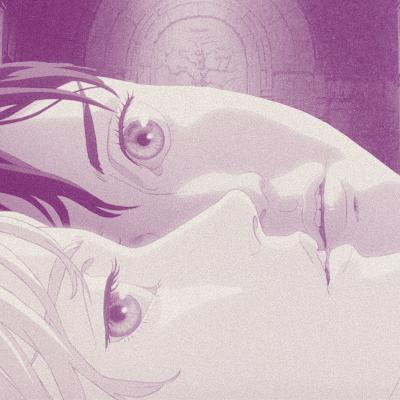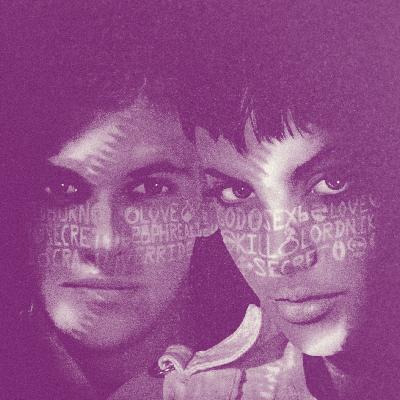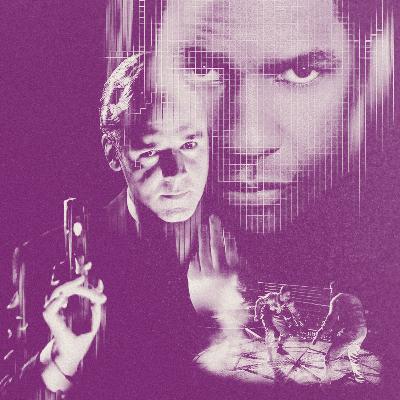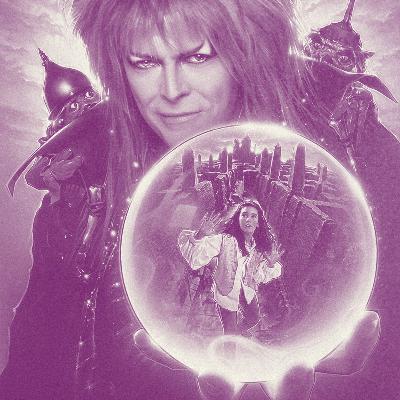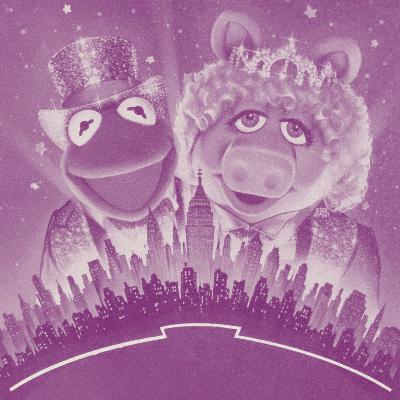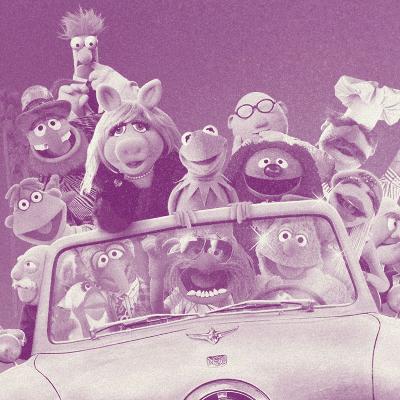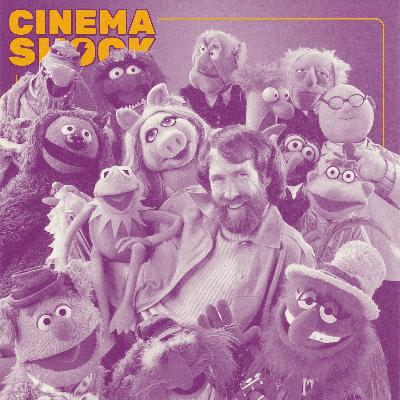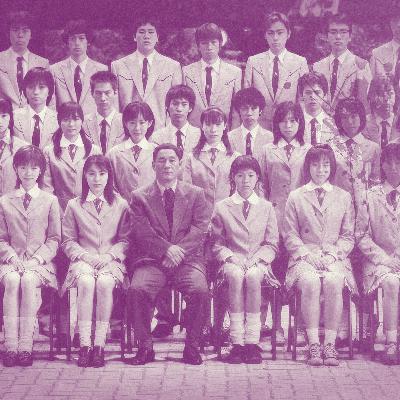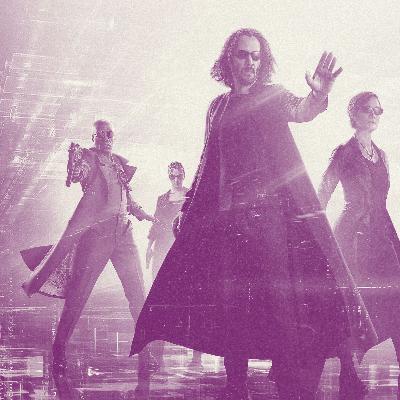Discover Cinema Shock
Cinema Shock

398 Episodes
Reverse
In the second half of our deep dive into Mamoru Oshii’s GHOST IN THE SHELL, we pick up with the film’s release and the surprising reception that followed. Despite high expectations, GHOST IN THE SHELL underperformed at the box office, but quickly found a second life on home video, where it became a breakout hit in the West and helped bring anime into the cultural mainstream.
We share our own thoughts on the film, from its unforgettable visuals to its haunting score, and dig into the philosophical questions it raises about technology, consciousness, and identity. Finally, we explore the movie’s enduring legacy—not just in its own ever-expanding franchise, but in the countless films and creators it inspired.
Join us as we wrap up our exploration of a landmark work that forever changed how the world saw animation—and what animation could say.
Want to support the show?
Subscribers of CinemaShock+ can enjoy an extended version of this episode, which includes bonus segments and additional content, plus get access to all episodes two days early, exclusive merchandise discounts, and more. Join now at cinemashock.net/plus.
ASSOCIATE PRODUCERS:
Andy Lancaster | asotirov | Benjamin Yates | Caverly | courtland ashley | curtcake5k | Elton Novara | Hunter D Mackenzie | Jackson_Baker | LillymckY | Lucy Lawson | MagicBloat | Nate Izod | Nathan Kelley | Robert Stinson | Spacemonkey73
Theme Song: "There's Still a Little Bit of Time, If We Hurry and I Mean Hurry" by Slasher Film Festival Strategy.
This episode was written, produced and edited by Gary Horne, Justin Bishop & Todd A. Davis.
For episode archives, merch, show notes, and more, visit cinemashock.net
For the next film in our Virtual Insanity series, we’re headed to the land of the rising sun to uncover the story behind one of the most iconic animes ever made: Mamoru Oshii’s GHOST IN THE SHELL.
In this episode, we trace the origins of the cyberpunk classic, starting with Masamune Shirow’s original manga and following the career of visionary director Mamoru Oshii up through his groundbreaking work on GHOST IN THE SHELL. We dig into the film’s production process—from its innovative animation techniques to the challenges of bringing such a complex story to the screen—and look at how it was marketed ahead of release. Along the way, we explore how anime began to make waves beyond Japan’s borders, and how landmark films like AKIRA helped pave the way for a global audience hungry for ambitious, adult animation.
Join us as we set the stage for a film that forever changed the conversation about technology, identity, and what it means to be alive.
Want to support the show?
Subscribers of CinemaShock+ can enjoy an extended version of this episode, which includes bonus segments and additional content, plus get access to all episodes two days early, exclusive merchandise discounts, and more. Join now at cinemashock.net/plus.
ASSOCIATE PRODUCERS:
Andy Lancaster | asotirov | Benjamin Yates | Caverly | courtland ashley | curtcake5k | Elton Novara | Hunter D Mackenzie | Jackson_Baker | LillymckY | Lucy Lawson | MagicBloat | Nate Izod | Nathan Kelley | Robert Stinson | Spacemonkey73
Theme Song: "There's Still a Little Bit of Time, If We Hurry and I Mean Hurry" by Slasher Film Festival Strategy.
This episode was written, produced and edited by Gary Horne, Justin Bishop & Todd A. Davis.
For episode archives, merch, show notes, and more, visit cinemashock.net
"You could sit at home, and do like absolutely nothing, and your name goes through like 17 computers a day. 1984? Yeah right, man. That's a typo. Orwell is here now. He's livin' large. We have no names, man. No names. We are nameless!"
HACKERS hit theaters in 1995—and mostly flatlined. But before it became a cult phenomenon, it was a risky production that blended cutting-edge visual effects, rave culture aesthetics, and a sincere belief that the digital frontier was worth fighting for. In this episode, we dive into the making of the film, the marketing missteps that doomed its initial release, and the slow rise of HACKERS as a touchstone for cyberpunk cinema and internet culture. We’ll also share our own thoughts on its uncanny prescience, its unforgettable style, and why it still resonates with audiences today.
Suit up, grab your laptop, and join us as we trace how Hackers went from box-office flop to a beloved artifact of the wired age.
Want to support the show?
Subscribers of CinemaShock+ can enjoy an extended version of this episode, which includes bonus segments and additional content, plus get access to all episodes two days early, exclusive merchandise discounts, and more. Join now at cinemashock.net/plus.
ASSOCIATE PRODUCERS:
Andy Lancaster | asotirov | Benjamin Yates | Caverly | courtland ashley | curtcake5k | Elton Novara | Hunter D Mackenzie | Interzone78 | Jackson_Baker | Jvance325 | LillymckY | Lucy Lawson | MagicBloat | Nate Izod | Nathan Kelley | Robert Stinson
Theme Song: "There's Still a Little Bit of Time, If We Hurry and I Mean Hurry" by Slasher Film Festival Strategy.
This episode was written, produced and edited by Gary Horne, Justin Bishop & Todd A. Davis.
For episode archives, merch, show notes, and more, visit cinemashock.net
"This is our world now. The world of the electron and the switch; the beauty of the baud. We exist without nationality, skin color, or religious bias. You wage wars, murder, cheat, lie to us and try to make us believe it's for our own good, yet we're the criminals. Yes, I am a criminal. My crime is that of curiosity. I am a hacker, and this is my manifesto."
Before HACKERS became a neon-drenched cult classic, it was the brainchild of screenwriter Rafael Moreu, who embedded himself in the early hacker underground to capture the real pulse of digital rebellion. In this episode, we trace the film’s roots in the authentic hacker culture of the early ’90s — from clandestine meetups and phone phreaking to the media frenzy that turned hackers into urban legends. You’ll hear how director Iain Softley joined the project, why the production aimed for subcultural credibility over Hollywood cliché, and how a young cast — led by Angelina Jolie and Jonny Lee Miller — brought this wired world to life.
Jack in with us as we uncover the origin story of HACKERS, where fact, fiction, and cyberpunk style collided.
Want to support the show?
Subscribers of CinemaShock+ can enjoy an extended version of this episode, which includes bonus segments and additional content, plus get access to all episodes two days early, exclusive merchandise discounts, and more. Join now at cinemashock.net/plus.
ASSOCIATE PRODUCERS:
Andy Lancaster | asotirov | Benjamin Yates | Caverly | courtland ashley | curtcake5k | Elton Novara | Hunter D Mackenzie | Interzone78 | Jackson_Baker | Jvance325 | LillymckY | Lucy Lawson | MagicBloat | Nate Izod | Nathan Kelley | Robert Stinson
Theme Song: "There's Still a Little Bit of Time, If We Hurry and I Mean Hurry" by Slasher Film Festival Strategy.
This episode was written, produced and edited by Gary Horne, Justin Bishop & Todd A. Davis.
For episode archives, merch, show notes, and more, visit cinemashock.net
"That's reality for you. No saving, no resetting."
For the next entry in our Virtual Insanity series, we’re diving headfirst into the world of early virtual reality—and the filmmaker who helped bring it to the big screen. This week, we're going behind the scenes on VIRTUOSITY, the 1995 cyber thriller starring Denzel Washington and Russell Crowe.
In our last episode, we explored how THE LAWNMOWER MAN came to be—and how its unexpected success paved the way for VIRTUOSITY, a film already deep in development before Brett Leonard came aboard. This time, we’re zeroing in on VIRTUOSITY itself: its chaotic production, its failure to replicate Leonard’s earlier success, and how that shaped the trajectory of his career. We’ll also dig into the film’s surprisingly sharp take on Artificial Intelligence and consider where it fits within the broader legacy of cyberpunk fiction.
Want to support the show?
Subscribers of CinemaShock+ can enjoy an extended version of this episode, which includes bonus segments and additional content, plus get access to all episodes two days early, exclusive merchandise discounts, and more. Join now at cinemashock.net/plus.
ASSOCIATE PRODUCERS:
Andy Lancaster | asotirov | Benjamin Yates | Caverly | courtland ashley | curtcake5k | Elton Novara | Hunter D Mackenzie | Interzone78 | Jackson_Baker | Jvance325 | Lucy Lawson | MagicBloat | Nate Izod | Nathan Kelley | Robert Stinson
Theme Song: "There's Still a Little Bit of Time, If We Hurry and I Mean Hurry" by Slasher Film Festival Strategy.
This episode was written, produced and edited by Gary Horne, Justin Bishop & Todd A. Davis.
For episode archives, merch, show notes, and more, visit cinemashock.net
"I'm a fifty terrabyte, self-evolving, neural network, double backflip off the high platform. I'm not a swan dive."
For the next entry in our Virtual Insanity series, we’re diving headfirst into the world of early virtual reality—and the filmmaker who helped bring it to the big screen. This week, we're going behind the scenes on VIRTUOSITY, the 1995 cyber thriller starring Denzel Washington and Russell Crowe. But before we get there, we’re rewinding to 1992's THE LAWNMOWER MAN —the first film to seriously tackle VR on screen and the movie that launched director Brett Leonard’s Hollywood career.
We’ll explore how THE LAWNMOWER MAN came to be, why it sparked a legal battle with Stephen King, and how its unexpected success set the stage for VIRTUOSITY, a film that had already been in development long before Leonard came aboard. It's a double feature of tech-noir chaos, '90s visual effects, and the strange, glitchy dream of cyberspace.
Want to support the show?
Subscribers of CinemaShock+ can enjoy an extended version of this episode, which includes bonus segments and additional content, plus get access to all episodes two days early, exclusive merchandise discounts, and more. Join now at cinemashock.net/plus.
ASSOCIATE PRODUCERS:
Andy Lancaster | asotirov | Benjamin Yates | Caverly | courtland ashley | curtcake5k | Elton Novara | Hunter D Mackenzie | Interzone78 | Jackson_Baker | Jvance325 | Lucy Lawson | MagicBloat | Nate Izod | Nathan Kelley | Robert Stinson
Theme Song: "There's Still a Little Bit of Time, If We Hurry and I Mean Hurry" by Slasher Film Festival Strategy.
This episode was written, produced and edited by Gary Horne, Justin Bishop & Todd A. Davis.
For episode archives, merch, show notes, and more, visit cinemashock.net
"I can carry nearly eighty gigs of data in my head."
For our Cinema Shock summer series, we wanted to take a look back at a few movies that were celebrating significant anniversaries this year. When we began browsing films released in 1995, we noticed an interesting trend: There was a glut of cyber thrillers released that year. And more specifically, cyber thrillers that dealt with the concept of virtual reality.
This probably shouldn't be surprising: 1995 was a banner year for technology; with the release of Windows 95 and the increasing availability of home internet, more people than ever were being connected to the World Wide Web. And as we know, Hollywood loves a trend. Enter: Virtual Insanity.
In this series, we'll be exploring some of the more significant films of this very specific subgenre, all of which are celebrating their 30th anniversary this year. Most of these films fell flat at the box office in 1995 but all have reached varying degrees of notoriety in the decades since.
Kicking things off, we're taking a look at JOHNNY MNEMONIC, possibly the strangest of the bunch. It's a film with a long, complex production history whose journey from page (in a short story by cyberpunk legend William Gibson) to screen was fraught with delays, difficulties and compromises.
In our last episode, we detailed the early days of JOHNNY MNEMONIC's development and filming. This week, we'll focus on the film's contentious post production period, where the Hollywood execs responsible for marketing the film tried to turn it into something it was never intended to be, hoping to capitalize on the newfound post-SPEED superstardom of Keanu Reeves. We'll also get into our own thoughts on the film's legacy, as well as how its views of the internet and global connectivity are still relevant today.
Next week: We continue our look at the cyber thrillers of 1995 with an often-overlooked film that stars two of Hollywood's biggest names.
Want to support the show?
Subscribers of CinemaShock+ can enjoy an extended version of this episode, which includes the full story of JOHNNY MNEMONIC (Parts 1 and 2), as well as bonus segments and additional content, plus get access to all episodes two days early, exclusive merchandise discounts, and more. Join now at cinemashock.net/plus.
ASSOCIATE PRODUCERS:
Andy Lancaster | asotirov | Benjamin Yates | Caverly | courtland ashley | curtcake5k | Elton Novara | Hunter D Mackenzie | Interzone78 | Jackson_Baker | Jvance325 | Lucy Lawson | MagicBloat | Nate Izod | Nathan Kelley | Robert Stinson
Theme Song: "There's Still a Little Bit of Time, If We Hurry and I Mean Hurry" by Slasher Film Festival Strategy.
This episode was written, produced and edited by Gary Horne, Justin Bishop & Todd A. Davis.
For episode archives, merch, show notes, and more, visit cinemashock.net
"I want to get online... I need a computer!"
For our Cinema Shock summer series, we wanted to take a look back at a few movies that were celebrating significant anniversaries this year. When we began browsing films released in 1995, we noticed an interesting trend: There was a glut of cyber thrillers released that year. And more specifically, cyber thrillers that dealt with the concept of virtual reality.
This probably shouldn't be surprising: 1995 was a banner year for technology; with the release of Windows 95 and the increasing availability of home internet, more people than ever were being connected to the World Wide Web. And as we know, Hollywood loves a trend. Enter: Virtual Insanity.
In this series, we'll be exploring some of the more significant films of this very specific subgenre, all of which are celebrating their 30th anniversary this year. Most of these films fell flat at the box office in 1995 but all have reached varying degrees of notoriety in the decades since.
Kicking things off, we're taking a look at JOHNNY MNEMONIC, possibly the strangest of the bunch. It's a film with a long, complex production history whose journey from page (in a short story by cyberpunk legend William Gibson) to screen was fraught with delays, difficulties and compromises.
In this, the first of two episodes detailing JOHNNY MNEMONIC's story, we'll establish just why cyber thrillers became a trend, how one of 1980s New York's most prominent visual artists came on board as the director, and how the vision for the film trasnformed from a low budget black-and-white art film into a nearly $30 million major studio production.
Next week: In Part 2 of our look at JOHNNY MNEMONIC, we'll detail the film's contentious post-production period, it's bungled release, and box office performance, as well as our own thoughts on the film and how its vision of the future is still relevant today.
Want to support the show?
Subscribers of CinemaShock+ can enjoy an extended version of this episode, which includes the full story of JOHNNY MNEMONIC (Parts 1 and 2), as well as bonus segments and additional content, plus get access to all episodes two days early, exclusive merchandise discounts, and more. Join now at cinemashock.net/plus.
ASSOCIATE PRODUCERS:
Andy Lancaster | asotirov | Benjamin Yates | Caverly | courtland ashley | curtcake5k | Elton Novara | Hunter D Mackenzie | Interzone78 | Jackson_Baker | Jvance325 | Lucy Lawson | MagicBloat | Nate Izod | Nathan Kelley | Robert Stinson
Theme Song: "There's Still a Little Bit of Time, If We Hurry and I Mean Hurry" by Slasher Film Festival Strategy.
This episode was written, produced and edited by Gary Horne, Justin Bishop & Todd A. Davis.
For episode archives, merch, show notes, and more, visit cinemashock.net
“Please watch out for each other and love and forgive everybody. It's a good life, enjoy it.”
Over the course of this series, we've come to not only love Jim Henson's work even more than we already did, but we've come to love and appreciate the person that Jim Henson was. In a cynical world, Henson was a beacon of hope and optimism and he spent his entire career — his entire life — trying to share that optimism with the world at large.
While he was disappointed with the reception of his labor of love LABYRINTH, Henson didn't walk away from the project defeated. Instead, he made the decision to channel his energy into new projects, fueled by his unwavering optimism. Jim Henson, in the last years of his too-short life, did everything he could to make the world a better place through his art.
In this, the final episode Jim Henson: Heart Felt, we want to discuss Jim's legacy beyond LABYRINTH. From Fraggle Rock to The StoryTeller to MuppetVision 3D and beyond, Jim worked tirelessly with every moment he had on this earth to bring joy to everyone he came in contact with, whether it was in-person or through a television or movie screen.
As we say goodbye to Jim Henson and recount his final years — and his final days — we can't help but feel a little bit sad. But we also feel a sense of gratitude that we got to exist on the same planet as Henson and that we'll be able to experience the magic he brought to us until the end of time. Thank you, our listeners, for going on this journey with us. We promise we'll be back to talking about weird cult movies very soon.
Want to support the show?
Subscribers of CinemaShock+ can enjoy an extended version of this episode, which includes bonus segments and additional content, plus get access to all episodes two days early, exclusive merchandise discounts, and more. Join now at cinemashock.net/plus.
ASSOCIATE PRODUCERS:
Andrew C. | Andy Lancaster | asotirov | Benjamin Yates | Caverly | Courtland Ashley | Curt M. | Elton Novara | Interzone78 | Jackson_Baker | Justin V. | Lucy Lawson | Nate Izod | Nathan Kelley | qoheleth | Robert Stinson
Theme Song: "There's Still a Little Bit of Time, If We Hurry and I Mean Hurry" by Slasher Film Festival Strategy.
This episode was written, produced and edited by Gary Horne, Justin Bishop & Todd A. Davis.
For episode archives, merch, show notes, and more, visit cinemashock.net
"Everything I've done, I've done for you. I move the stars for no one.”
After the release of THE DARK CRYSTAL — and its critical and commercial failure — Jim Henson and his collaborator on that project, illustrator Brian Froud, went back to the drawing board for their next ambitious fantasy project.
Utilizing the lessons that they’d learned on that film, they looked to craft another story with the same amount of imagination, but with more humor, more heart, more music and… more humans.
The resulting film, LABYRINTH, was not much more well-received at the time of its release, but like its predecessor, it’s gone on to become a beloved film, one that’s now considered a classic and one of the creative pinnacles of Henson’s career.
In this episode, we tell down the full story of how LABYRINTH was made, from its original concept, to the dozens of script drafts that it went through during its development, to the casting of David Bowie and Jennifer Connelly (and the actors who almost got the parts instead), and all of the innovative puppetry and creature creation that brought it to life.
Want to support the show?
Subscribers of CinemaShock+ can enjoy an extended version of this episode, which includes bonus segments and additional content, plus get access to all episodes two days early, exclusive merchandise discounts, and more. Join now at cinemashock.net/plus.
ASSOCIATE PRODUCERS:
Andrew C. | Andy Lancaster | asotirov | Benjamin Yates | Caverly | Curt M. | Elton Novara | Interzone78 | Jackson_Baker | Justin V. | Lucy Lawson | Nate Izod | Nathan Kelley | qoheleth | Robert Stinson
Theme Song: "There's Still a Little Bit of Time, If We Hurry and I Mean Hurry" by Slasher Film Festival Strategy.
This episode was written, produced and edited by Gary Horne, Justin Bishop & Todd A. Davis.
For episode archives, merch, show notes, and more, visit cinemashock.net
This episode was originally released in May 2022.
In this Cinema Shock Rewind episode, we're revisiting our episode on Frank Oz's LITTLE SHOP OF HORRORS. Oz got his start as Jim Henson's closest collaborator, working with Jim during the Muppets' early years, and serving as a key piece of the Muppets' creative framework through the years of The Muppet Show and the subsequent feature films. In fact, Oz made his solo directorial debut on THE MUPPETS TAKE MANHANTTAN, which led to him being courted for LITTLE SHOP OF HORRORS not long after.
In this episode, we'll tell you the full story of how LITTLE SHOP OF HORRORS was made, now with the added context of Oz's participation in the world of The Muppets.
Want to support the show?
Subscribers of CinemaShock+ can enjoy an extended version of this episode, which includes bonus segments and additional content, plus get access to all episodes two days early, exclusive merchandise discounts, and more. Join now at cinemashock.net/plus.
ASSOCIATE PRODUCERS:
Andrew C. | Andy Lancaster | asotirov | Benjamin Yates | Caverly | Curt M. | Elton Novara | Interzone78 | Jackson_Baker | Justin V. | Lucy Lawson | Nate Izod | Nathan Kelley | qoheleth | Robert Stinson
Theme Song: "There's Still a Little Bit of Time, If We Hurry and I Mean Hurry" by Slasher Film Festival Strategy.
This episode was written, produced and edited by Gary Horne, Justin Bishop & Todd A. Davis.
For episode archives, merch, show notes, and more, visit cinemashock.net
"Hey, I tell you what is. Big city, hmm? Live, work, huh? But not city only. Only peoples. Peoples is peoples. No is buildings. Is tomatoes, huh? Is peoples, is dancing, is music, is potatoes. So, peoples is peoples. Okay?"
With his dream project THE DARK CRYSTAL taking so much of his time and energy, Jim Henson was content to slim down his role on the next Muppet project and allow his right hand man Frank Oz to take the helm in his first solo directing feature.
THE MUPPETS TAKE MANHATTAN would be the last Muppet film that Henson would be involved with before his untimely passing a few years later, but the film's legacy would have a lasting impact on his company, especially in the form of the Muppet Babies, who'd get their own Saturday morning cartoon, inspired by a sequence from the film.
And let's not forget the media circus that surrounded the wedding of the century!
In this episode, we give all the details on how the film came to be, from its concept, multiple script changes, release and beyond!
Want to support the show?
Subscribers of CinemaShock+ can enjoy an extended version of this episode, which includes bonus segments and additional content, plus get access to all episodes two days early, exclusive merchandise discounts, and more. Join now at cinemashock.net/plus.
ASSOCIATE PRODUCERS:
Andrew C. | Andy Lancaster | asotirov | Benjamin Yates | Caverly | Curt M. | Elton Novara | Interzone78 | Jackson_Baker | Justin V. | Lucy Lawson | Nate Izod | Nathan Kelley | qoheleth | Robert Stinson
ASSOCIATE PRODUCERS:
Andrew C. | Andy Lancaster | asotirov | Benjamin Yates | Caverly | Curt M. | Elton Novara | Interzone78 | Jackson_Baker | Justin V. | Lucy Lawson | Nate Izod | Nathan Kelley | qoheleth | Robert Stinson
Join the Community: Substack | Discord
Theme Song: "There's Still a Little Bit of Time, If We Hurry and I Mean Hurry" by Slasher Film Festival Strategy.
This episode was written, produced and edited by Gary Horne, Justin Bishop & Todd A. Davis.
For episode archives, merch, show notes, and more, visit cinemashock.net
"Another world, another time, in the age of wonder. A thousand years ago, this land was green and good - until the Crystal cracked."
After the completion of THE GREAT MUPPET CAPER, Jim Henson focused on a project that had been in the works for years — its earliest seeds were planted well before even The Muppet Show had begun production — an ambitious fantasy film made in collaboration with renowned illustrator Brian Froud.
That film, THE DARK CRYSTAL, would be Jim's most ambitious project to date. It's a film that pushed the limits of what puppetry was capable of, essentially creating an entirely new artform that would change the landscape of movie special effects for years to come.
But it was also a great artistic and financial risk for Henson. When it was released, audiences didn't quite know what to think of it, but the film has become to be considered a bonafide classic in the decades since. In this episode, we'll detail the years long process to bring THE DARK CRYSTAL to the screen.
D&D LIVE FOR CHARITY, Hosted by Mr. Todd A. Davis
Comedians, Drag Performers, and Pro Wrestlers play Dungeons & Dragons in front of a LIVE audience to benefit The Julie Valentine Center!
🎟Purchase Tickets🎟
Want to support the show?
Subscribers of CinemaShock+ can enjoy an extended version of this episode, which includes bonus segments and additional content, plus get access to all episodes two days early, exclusive merchandise discounts, and more. Join now at cinemashock.net/plus.
ASSOCIATE PRODUCERS:
Andrew C. | Andy Lancaster | asotirov | Benjamin Yates | Caverly | Curt M. | Elton Novara | Interzone78 | Jackson_Baker | Justin V. | Lucy Lawson | Nate Izod | Nathan Kelley | qoheleth | Robert Stinson
Theme Song: "There's Still a Little Bit of Time, If We Hurry and I Mean Hurry" by Slasher Film Festival Strategy.
This episode was written, produced and edited by Gary Horne, Justin Bishop & Todd A. Davis.
For episode archives, merch, show notes, and more, visit cinemashock.net
"There'll be mystery and catastrophe!
But it's all in fun, you paid the money - wait and see!
Hey! A movie! Starring everybody! And me!"
After the success of THE MUPPET MOVIE, Jim Henson had hoped to get funding for a fantasy film that had become a sort of dream project of his. But that film — which would not feature the beloved and recognizable Muppets — would be a sizeable risk, so his producer convinced him to strike while the iron was hot and make a sequel to THE MUPPET MOVIE before embarking on his ambitious fantasy project.
This time around, Jim Henson himself would be in the director's chair, creating a new adventure for the Muppet gang that would be a send-up of classic Hollywood films.
In this episode of Jim Henson: Heart Felt, we'll detail the full story of how THE GREAT MUPPET CAPER was made, from its early script woes, through its envelope-pushing puppetry innovations, and its eventual release and reception, where it was met with high expecations.
Want to support the show?
Subscribers of CinemaShock+ can enjoy an extended version of this episode, which includes bonus segments and additional content, plus get access to all episodes two days early, exclusive merchandise discounts, and more. Join now at cinemashock.net/plus.
ASSOCIATE PRODUCERS:
Andrew C. | Andy Lancaster | asotirov | Benjamin Yates | Caverly | Curt M. | Elton Novara | Interzone78 | Jackson_Baker | Justin V. | Lucy Lawson | Nate Izod | Nathan Kelley | qoheleth | Robert Stinson
Theme Song: "There's Still a Little Bit of Time, If We Hurry and I Mean Hurry" by Slasher Film Festival Strategy.
This episode was written, produced and edited by Gary Horne, Justin Bishop & Todd A. Davis.
For episode archives, merch, show notes, and more, visit cinemashock.net
“Life's like a movie. Write your own ending. Keep believing. Keep pretending.”
With The Muppet Show, Jim Henson had reached the goal that he’d set for himself many years before: He’d managed to get his beloved Muppets their own weekly television series.
Not only that, but it was an enormous success, quickly becoming one of the most watched television shows in the entire world. The Muppets were as big as they’d ever been. The next step seemed logical:
The Muppets were going to Hollywood.
Getting them there wouldn’t be as straight-forward as you might think. After all, what Jim was proposing to do — bringing the Muppets out of their highly-controlled sutdio environment and into the real world — was unprecedented, and there was a question as to whether it’d work at all.
In the latest episode of Jim Henson: Heart Felt, we’re telling the complete story of just how Henson pulled it off, and how he created one of the most beloved films of the 1970s, one that still resonated with audiences nearly half a century later.
Want to support the show?
Subscribers of CinemaShock+ can enjoy an extended version of this episode, which includes bonus segments and additional content, plus get access to all episodes two days early, exclusive merchandise discounts, and more. Join now at cinemashock.net/plus.
ASSOCIATE PRODUCERS:
Andrew C. | Andy Lancaster | asotirov | Benjamin Yates | Caverly | Curt M. | Elton Novara | Interzone78 | Jackson_Baker | Justin V. | Lucy Lawson | Nate Izod | Nathan Kelley | qoheleth | Robert Stinson
Theme Song: "There's Still a Little Bit of Time, If We Hurry and I Mean Hurry" by Slasher Film Festival Strategy.
This episode was written, produced and edited by Gary Horne, Justin Bishop & Todd A. Davis.
For episode archives, merch, show notes, and more, visit cinemashock.net
By the mid-1970s, Jim Henson and the Muppets were as big as they'd ever been. They'd helped turn Sesame Street into a household name and continued to be a hot commodity on the variety show circuit.
But Jim had yet to do the one thing he'd been trying to accomplish since the early 1960s: Create a prime time television show starring the Muppets, and one that wasn't solely aimed at a preschool audience.
He made several attempts along the way, filming several pilots with varying degrees of sucess, and even had a stint alongside the Not Ready For Prime Time Players on the first season of Saturday Night Live, but it would take a while before he was able to convince anyone to give The Muppets a shot at their own show.
That all changed in 1976, with a little help from Julie Andrews (yep, that Julie Andrews) and a British Lord. With the debut of The Muppet Show, Jim and his gang of puppeteers would become one of the biggest pop culture phenomenons on the planet.
This is the story of how they got there.
Want to support the show?
Subscribers of CinemaShock+ can enjoy an extended version of this episode, which includes bonus segments and additional content, plus get access to all episodes two days early, exclusive merchandise discounts, and more. Join now at cinemashock.net/plus.
ASSOCIATE PRODUCERS:
Andrew C. | Andy Lancaster | asotirov | Benjamin Yates | Caverly | Curt M. | Elton Novara | Interzone78 | Jackson_Baker | Justin V. | lolodrummer | Nate Izod | Nathan Kelley | qoheleth | Robert Stinson
Theme Song: "There's Still a Little Bit of Time, If We Hurry and I Mean Hurry" by Slasher Film Festival Strategy.
This episode was written, produced and edited by Gary Horne, Justin Bishop & Todd A. Davis.
For episode archives, merch, show notes, and more, visit cinemashock.net
“As children, we all live in a world of imagination, of fantasy, and for some of us that world of make-believe continues into adulthood.”
Despite spending years fighting against the notion that puppets were nothing more than “children’s entertainment,” Jim Henson found his greatest success thus far working on a television show aimed at toddlers: the groundbreaking educational series SESAME STREET.
But before he got there, Jim went on a years long detour into the world of experimental filmmaking, work that would ultimatley influence many of the inserts that he’d film for SESAME STREET.
In this episode, we’ll discuss Henson’s work on short films such as TIME PIECE and experimental television programs like YOUTH ‘68 and THE CUBE — not to mention his brief flirtation with opening a psychedlic nightclub and his time spent onstage in Las Vegas — before taking a deep dive into his involvement with SESAME STREET, a program that would change television, and the Muppets, forever.
ASSOCIATE PRODUCERS:
Andrew C. | Andy Lancaster | asotirov | Benjamin Yates | Caverly | Curt M. | Elton Novara | Interzone78 | Jackson_Baker | Justin V. | lolodrummer | Nate Izod | Nathan Kelley | qoheleth | Robert Stinson
Theme Song: "There's Still a Little Bit of Time, If We Hurry and I Mean Hurry" by Slasher Film Festival Strategy.
This episode was written, produced and edited by Gary Horne, Justin Bishop & Todd A. Davis.
For episode archives, merch, show notes, and more, visit cinemashock.net
It’s time to start a brand new series here on Cinema Shock! For the next few weeks, we’ll be telling the story of Jim Henson.
To truly tell the story of Henson’s life and career, we have to go all the way back to the beginning: In this inaugural episode, we’ll explore Jim’s early years, through the creation of his first TV show, SAM & FRIENDS (where Kermit the Frog made his first appearance), his groundbreaking commercial work, and the years spent working on THE JIMMY DEAN SHOW.
Join us for Jim Henson, Episode 1: "The Birth of The Muppets."
Want to support the show?
Subscribers of CinemaShock+ can enjoy an extended version of this episode, which includes bonus segments and additional content, plus get access to all episodes two days early, exclusive merchandise discounts, and more. Join now at cinemashock.net/plus.
ASSOCIATE PRODUCERS:
Andrew C. | Andy Lancaster | asotirov | Benjamin Yates | Caverly | Curt M. | Elton Novara | Justin V. | Nate Izod | Nathan Kelley | Robert Stinson
Theme Song: "There's Still a Little Bit of Time, If We Hurry and I Mean Hurry" by Slasher Film Festival Strategy.
This episode was written, produced and edited by Gary Horne, Justin Bishop & Todd A. Davis.
For episode archives, merch, show notes, and more, visit cinemashock.net
Our first pick in the new Cinema Shock Roulette series is a movie that needs no introduction—but it’s getting one anyway.
Released in 2000, Kinji Fukasaku’s BATTLE ROYALE shocked audiences with its graphic depiction of schoolchildren forced into a government-run deathmatch. Based on the controversial novel by Koushun Takami, the film was instantly polarizing—banned in multiple countries, attacked by politicians, and impossible to ignore.
In this episode, we trace the film’s journey from pulp novel to cultural lightning rod. We dive into the production, the Japanese censorship debate, the political context that made the film so dangerous, and how BATTLE ROYALE became a global cult phenomenon that still resonates today. And yes, we’ll talk about THE HUNGER GAMES comparisons, too.
Theme Song: "There's Still a Little Bit of Time, If We Hurry and I Mean Hurry" by Slasher Film Festival Strategy.
This episode was written, produced and edited by Gary Horne, Justin Bishop, & Todd Davis.
Visit our website for episode archives, merchandise & more: http://cinemashock.net
As we reach the end of our journey through the filmography of Lana and Lilly Wachowski, we return to the world that made them household names—only this time, it’s a little different.
Released nearly two decades after the original trilogy, THE MATRIX RESURRECTIONS was helmed by Lana Wachowski alone, marking the first solo directorial effort by either sibling. The result? A film that’s not just a sequel, but a reflection on legacy, grief, identity, and storytelling itself.
In this final episode of The Wachowskis' Cinema of Fluidity, we explore how this fourth MATRIX film came to be—from the personal tragedy that inspired Lana’s return to the franchise, to Lilly’s decision to step away from it entirely. We also dig into the casting changes, creative choices, and meta-commentary that define RESURRECTIONS—and where it fits in the Wachowski canon.
BUY OUR MERCH: http://cinemashock.threadless.com
Coming Up:
BATTLE ROYALE (2000)
Up next: Long Live the New Flesh: The Body Horror of David Cronenberg
Theme Song: "There's Still a Little Bit of Time, If We Hurry and I Mean Hurry" by Slasher Film Festival Strategy.
This episode was written, produced and edited by Gary Horne, Justin Bishop, & Todd Davis.
Visit our website for episode archives, blogs and more: http://cinemashock.net
Follow us:
twitter.com/cinema_shock
facebook.com/cinemashocknet
instagram.com/cinema_shock


